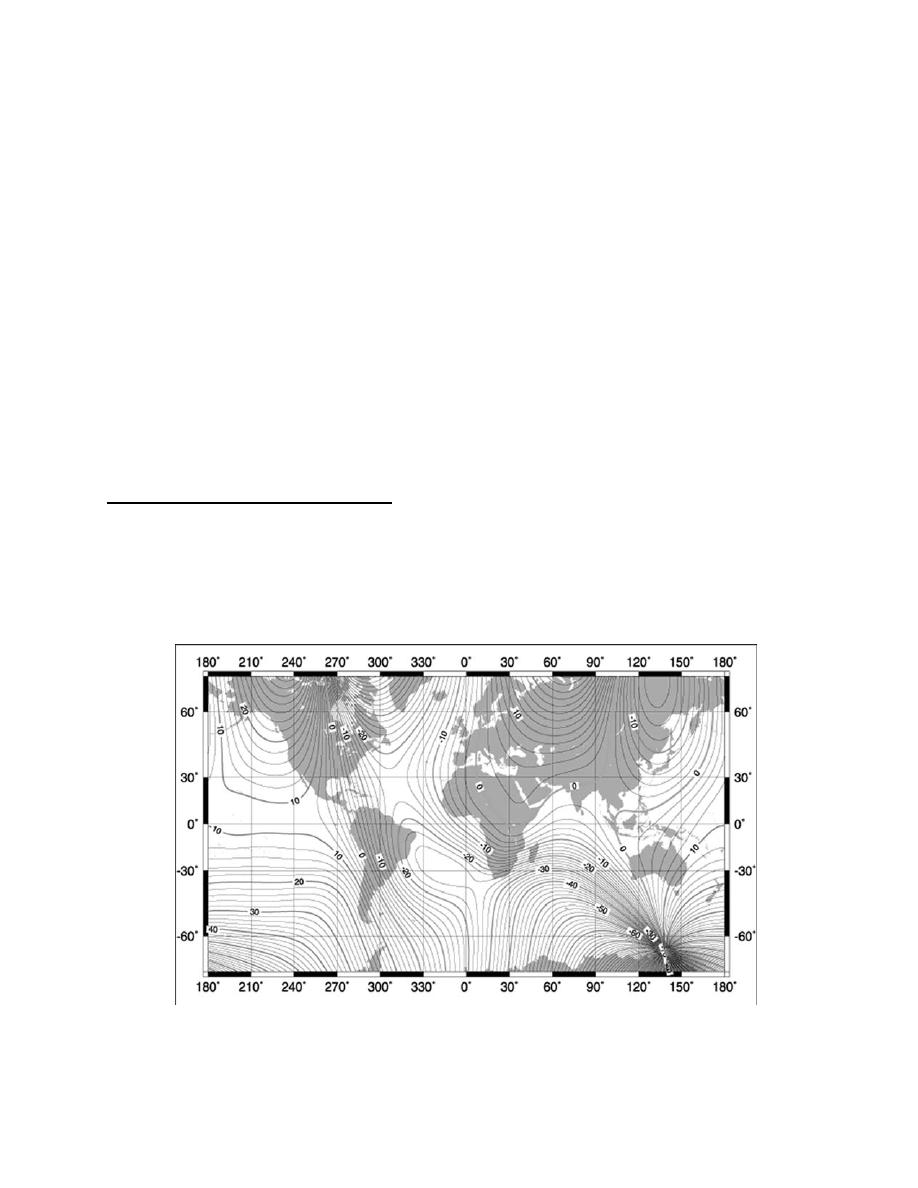 |
|||
|
|
|||
|
|
|||
| ||||||||||
|
|  Plotting lines to the poles to determine variation is not necessary. Charts contain isogonic
lines that depict variation for the area covered by the chart. An isogonic line connects
points of equal variation. A world chart showing all isogonic lines is depicted in Figure 4.2-
10. On TPC and ONC charts, isogonic lines appear as dashed blue lines with the variation
stated in degrees.
In order to convert a True Course to a Magnetic Course we use the following formulas:
MC = TC - East Variation
MC = TC + West Variation
To convert a True Course to a Magnetic Course, we use the memory aid, "East is least,
and West is best". This is a reminder to subtract easterly variation and add westerly
variation to determine the Magnetic Course. Example: In the vicinity of Pensacola, the
variation is 2 east. If True Course measures 045, subtract 2 to yield a Magnetic Course
of 043.
GLOBAL TIMEKEEPING SYSTEM
Due to the large distances covered in air travel, it is necessary to use a common time
standard to allow for coordination of assets on a global basis. The Local Mean Time (LMT)
must be converted to a common reference. This reference is the time at the prime meridian
(which passes through Greenwich, England) called Greenwich Mean Time or GMT, and it's
also referred to as "ZULU" (Z) time.
Figure 4.2-10 Isogonic Lines
4.6-28
|
|
Privacy Statement - Press Release - Copyright Information. - Contact Us |